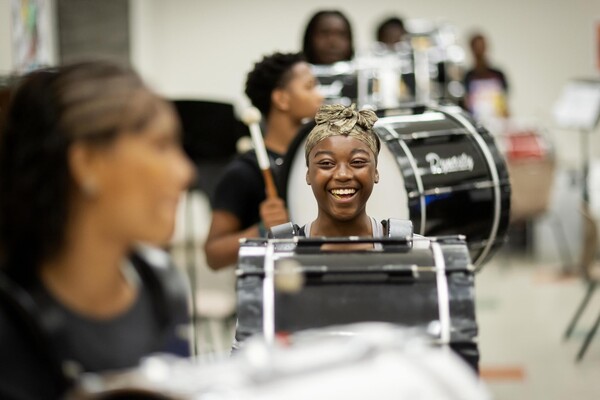
Image: Aditya Irawan/NurPhoto via AP Images
While crisscrossing campus this winter, careful observers may have noticed wildlife beyond the typical trash-picking squirrels and waddling pigeons. Sitting in a low tree branch or soaring between buildings, red-tailed hawks have become a common sight, surprising some unfamiliar with these adaptable birds.
“There is no other raptor species in North America that is as widely distributed or as numerous as the red-tailed hawk,” says Keith Russell, program manager for urban conservation at Audubon Pennsylvania. “They occur in a variety of habitats and locations throughout North America. They breed in deserts; they breed in deciduous forests; they breed in wetlands. And over the years, they’ve learned to use urban areas as well.”
Red-tailed hawks, or Buteo jamaicensis, are large birds of prey, standing up to two feet tall and possessing a wingspan that can exceed four feet. They feed on many different types of animals, including other birds and rodents. Some individuals migrate, while others remain in one location year-round, sometimes using the same nest year after year. Adults can be identified by—you guessed it—their rusty red tail.
Community members have reveled in spotting these birds, often taking to Twitter to share their sightings. “Can you spot both hawks?” tweeted Joshua Plotkin, a professor of biology in the School of Arts and Sciences, in December, as he shared a photo taken from his office in Lynch Labs showing two raptors in the frame. Pam Kosty, public relations director for the Penn Museum, had a close encounter with a hawk when it perched on her office’s windowsill in November. Others have spotted red-tails regularly around Van Pelt-Dietrich Library, along Locust Walk, and behind the Wistar Institute.
Mike McGraw, an alumnus of and lecturer in the Master of Environmental Studies (MES) program and a senior wildlife biologist/ecologist with Applied Ecological Services, recalls watching a red-tailed hawk enjoy a leisurely meal of a squirrel right in front of him a few years ago as he sat along the Class of 1959 Walk that borders Van Pelt.
“He didn’t care that I was sitting right there, he just ate away for 20 minutes,” McGraw says.
Penn isn’t unique within Philadelphia in having resident red-tailed hawks. The Franklin Institute has welcomed a pair and their offspring for many years, even setting up a nesting box and hawk cam. Russell has observed red-tails at many locations throughout the city.
For hawks, city living has its rewards—plump rodents and pigeons aplenty—but also its risks. Two juvenile hawks from the Franklin Institute pair died after flying into a glass window near their nest. Joe Durrance, an IT staff member in the Perelman School of Medicine who has monitored bird strikes on Penn’s campus, hasn’t personally witnessed a raptor after a window collision, but has had a fatality reported on the iNaturalist site he uses to keep track of such deaths.
“Raptors—especially young raptors, inexperienced raptors—could potentially become victims,” says Durrance, who is also a graduate of the MES program. “If they’re chasing their prey and don’t see the reflection or don’t understand the concept of glass, they may charge right into a window.”
To avoid these collisions, Durrance has been continuing to work with Facilities and Real Estate Services to make more buildings at Penn bird-friendly.
For eager bird-watchers, Russell cautions that not every raptor spotted on Penn’s campus will be a red-tail. In the summer breeding season, Cooper’s hawks, peregrine falcons, and American kestrels may pay a visit to campus. In the wintertime, raptor species using campus resources could include those species plus sharp-shinned hawks, red-shouldered hawks, and perhaps northern harrier’s hawks, he says.
Regardless of one’s bird identification skills, seeing a raptor can still make one pause to admire their stately majesty.
If you do spot one? Says Russell: “Just enjoy.”
Katherine Unger Baillie

Image: Aditya Irawan/NurPhoto via AP Images

nocred

Image: Michael Levine

A West Philadelphia High School student practices the drum as part of a July summer program in partnership with the Netter Center for Community Partnerships and nonprofit Musicopia.
nocred